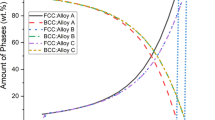Abstract
Development of ultrahigh-strength steels having optimum combination of high ultimate tensile strength, fracture toughness and corrosion resistance has gained much importance due to emerging applications in the aerospace, medical and automobile industries. Indigenous development program of such steel has been started in India. Initial heats have been prepared following the standard processing route, and it was found that while they showed very high strength (1725–1757 MPa), ductility in the transverse direction (13–32% reduction in area) was lower than specification (minimum 35% reduction in area). Poor texture was initially believed to be the possible reason for this low transverse ductility. Hence, investigative characterization work was taken up to understand this effect in different heats of Aerospace Material Specification (AMS5936 C) steel samples. In this paper, it would be conclusively discussed how microstructural inhomogeneity and the presence of inclusions became overpowering reasons for poor transverse ductility as compared with the textural reasons in indigenous material.



Similar content being viewed by others
References
Garrison Jr. W M, JOM 42 (1990) 20.
Midha A, and Wert D E, Adv. Mater. Process. 169 (2011) 30.
European Chemicals Agency, Authorisation List, List of substances included in Annex XIV. https://echa.europa.eu/authorisation-list/-/dislist/details/0b0236e1807dfaad. (Accessed 7 Aug 2018).
Ifergane S, Pinkas M, Barkay Z, Brosh E, Ezersky V, Berri O, and Eliaz N, Mater. Charact. 127 (2017) 129.
Ifergane S, Sabatani E, Carmeli B, Barkay Z, Ezersky V, Berri O, and Eliaz N, Ele Act 178 (2015) 494.
Ifergane S, Ben R, Sabatani E, Carmeli B, Berri O, and Eliaz N, J. Electrochem. Soc. 3 (2018) C107.
Custom 465 stainless steel, Technical datasheet, Carpenter Company (2014).
Tervo H, Kaijalainen A, Pikkarainen T, Mehtonen S, and Porter D, Mater. Sci. Eng. A 697 (2017) 184.
Dong F, Du L, Liu X, and Jiao J, Mater. Sci. Forum 749 (2013) 337.
M S Joo, D W Suh, and H K D H Bhadesia, ISIJ Int. 53 (2013) 1305.
Ghosh A, Modak P, Dutta R, and Chakrabrati D, Mater. Sci. Eng. A 654 (2016) 298.
Mishra S, and Darmann C, Int. Mater. Rev. 6 (1982) 307.
Acknowledgements
This work was supported by Ministry of Human Resource Development and Ministry of Steel, Govt. of India. Authors like to acknowledge MIDHANI, Hyderabad, for material production.
Author information
Authors and Affiliations
Corresponding author
Additional information
Publisher's Note
Springer Nature remains neutral with regard to jurisdictional claims in published maps and institutional affiliations.
Rights and permissions
About this article
Cite this article
Poojari, G., Kar, S.K., Singh, S.B. et al. Low Transverse Ductility in a New High-Strength Corrosion-Resistant Steel: Microstructure and Texture. Trans Indian Inst Met 72, 1453–1457 (2019). https://doi.org/10.1007/s12666-019-01571-w
Received:
Accepted:
Published:
Issue Date:
DOI: https://doi.org/10.1007/s12666-019-01571-w




